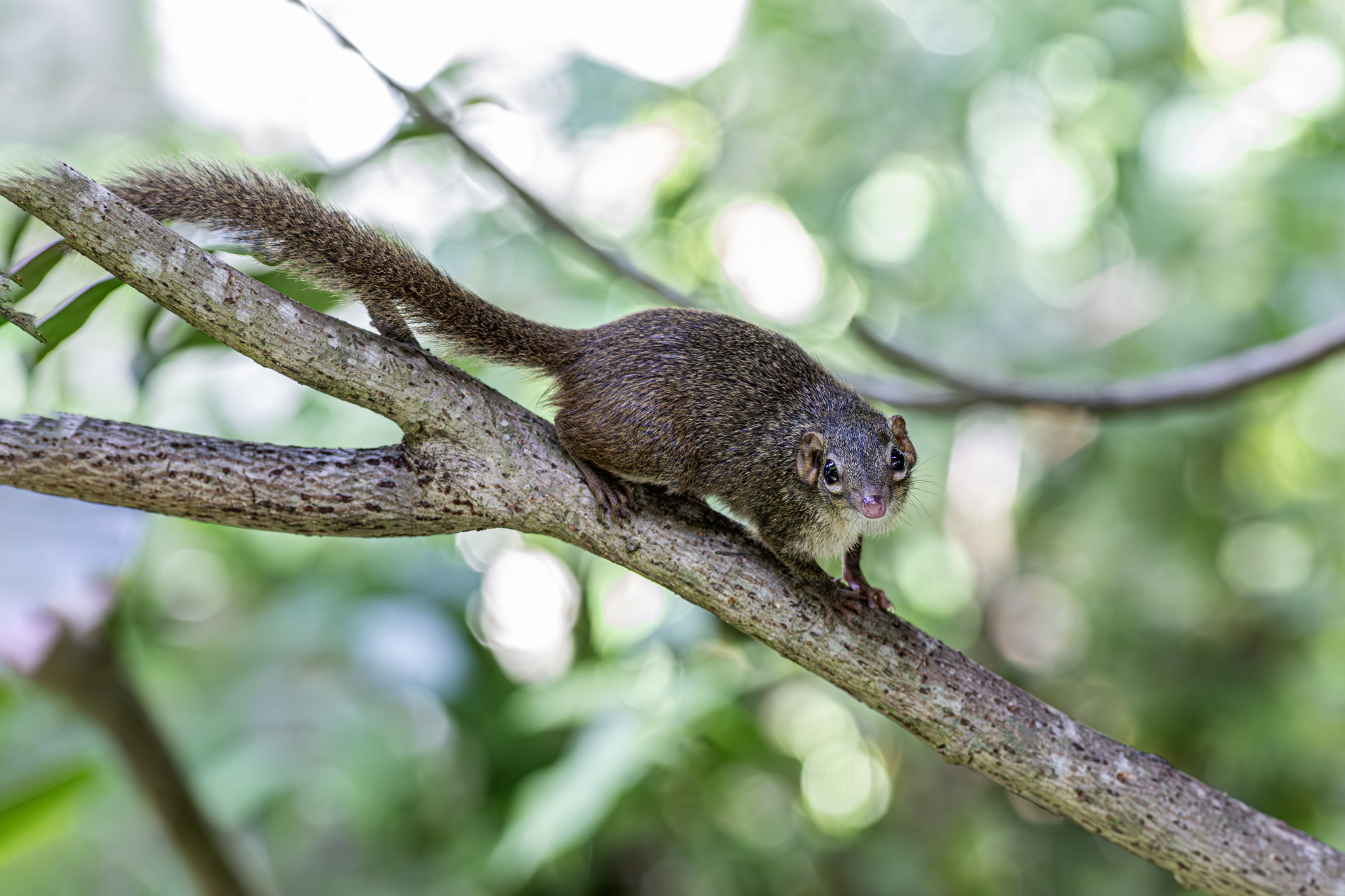The grey-bellied squirrel (Callosciurus caniceps) is a tree squirrel species known for its distinctive appearance and behaviors. Here are some key details about this interesting rodent:
Appearance
- Size: Adult grey-bellied squirrels typically measure about 20-25 cm (8-10 inches) in body length, with a tail roughly the same length as their body.
- Coloration: They have a greyish-brown back and a characteristic grey belly, which gives them their name. Their fur can vary in color intensity based on the region they inhabit. Their tails are bushy and often have a mix of grey and brown fur.
Habitat
- Range: This species is found in Southeast Asia, particularly in Thailand, Malaysia, and parts of Myanmar.
- Environment: They inhabit a variety of forest types, including tropical rainforests, deciduous forests, and sometimes plantations or secondary forests. They are highly adaptable and can thrive in both pristine and disturbed habitats.
Behavior
- Diet: Grey-bellied squirrels are omnivorous. Their diet primarily consists of fruits, nuts, seeds, and buds. They are also known to eat insects and small vertebrates when plant-based food is scarce.
- Foraging: These squirrels are diurnal, meaning they are active during the day. They spend most of their time foraging in the canopy and are adept at climbing and leaping between trees.
- Nesting: They build nests, or dreys, in the branches of trees. These nests are constructed from leaves, twigs, and other plant materials, providing shelter and a place to rear their young.
Reproduction
- Breeding Season: The breeding season for grey-bellied squirrels can vary, but it often coincides with periods of food abundance.
- Gestation and Offspring: Females give birth to litters of 1-3 young after a gestation period of about 6-7 weeks. The young are born blind and helpless and are cared for by the mother until they are old enough to fend for themselves.
Adaptations
- Arboreal Lifestyle: Grey-bellied squirrels are well-adapted to an arboreal (tree-dwelling) lifestyle. Their sharp claws and strong limbs allow them to climb and navigate through the trees with agility.
- Communication: They use vocalizations and tail movements to communicate with each other, especially to warn of potential predators.
Ecological Role
- Seed Dispersal: As frugivores and granivores, grey-bellied squirrels play a crucial role in seed dispersal, helping to maintain the health and diversity of their forest ecosystems.
- Prey Species: They are also an important prey species for a variety of forest predators, including birds of prey, snakes, and larger mammals.
Conservation
- Status: The conservation status of the grey-bellied squirrel is currently not well-documented, but they are generally not considered endangered. However, like many forest-dwelling species, they could be impacted by habitat loss and fragmentation.
- Threats: Deforestation, habitat degradation, and human encroachment are potential threats to their populations.
- Conservation Efforts: Protecting their natural habitats and ensuring the preservation of forests in Southeast Asia is vital for the conservation of this and many other species.
The grey-bellied squirrel is an integral part of its ecosystem, contributing to both the dynamics of the forest environment and the biodiversity of the region. Its adaptability and role in seed dispersal highlight its ecological importance.
Visited 844 times, 3 visit(s) today
Views: 1202
Subscribe to the newsletter:
